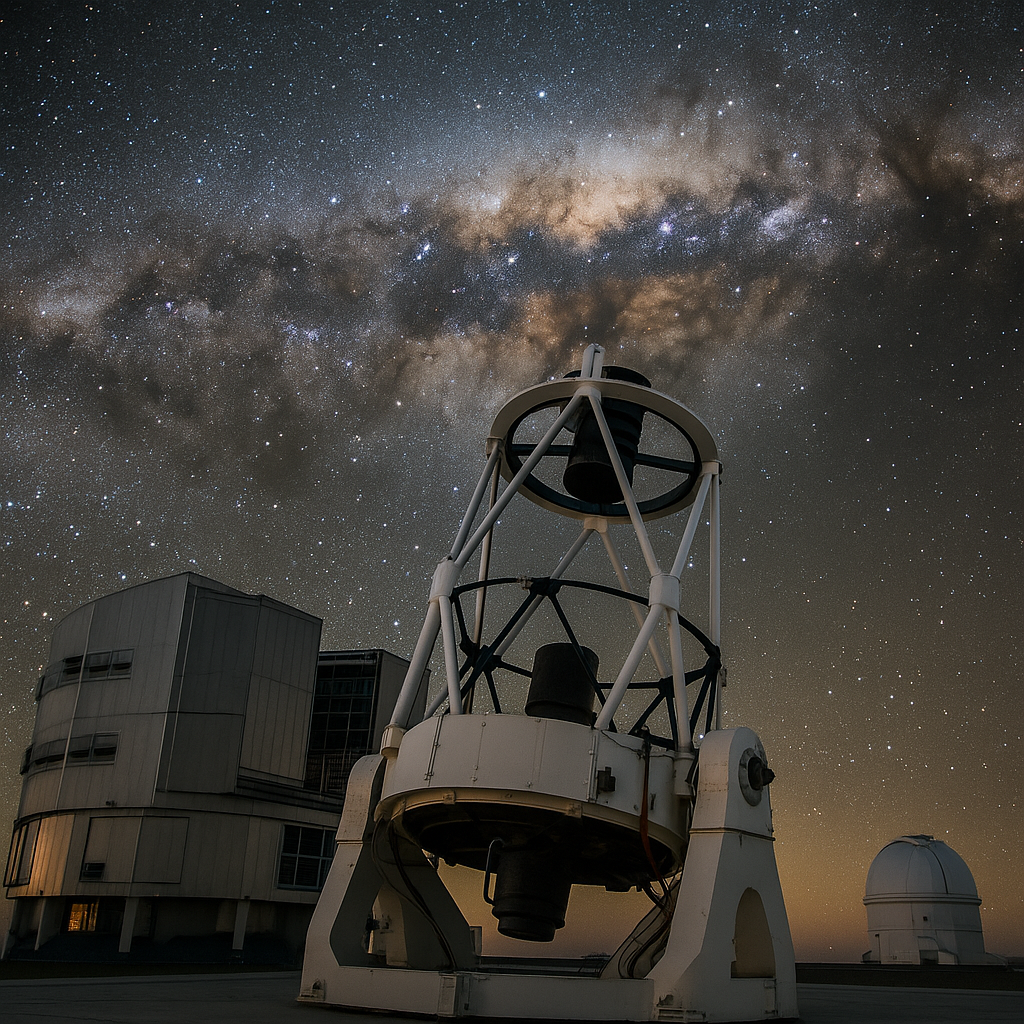DNS는 인터넷 이야기고, 천문학은 밤하늘 이야기 아닌가요?
저도 처음엔 그렇게 생각했어요.
하지만 알고 보니, 별을 향한 데이터의 길목에도 DNS가 있더라고요.
📡 관측소의 주소도 ‘도메인’으로 시작해요
우리가 별 사진을 보기 위해 NASA나 한국천문연구원 사이트를 찾을 때,
nasa.gov, kasi.re.kr 같은 도메인 주소를 사용하죠.
바로 이 도메인이 DNS의 작품이에요.
DNS는 사람이 기억하기 쉬운 문자 주소를
컴퓨터가 이해하는 숫자(IP 주소)로 바꿔주는 시스템이에요.
마치 우주 관측 장비들끼리 서로를 부를 수 있게 만드는 디지털 천문 관제탑이죠.
🌍 전 세계 망원경, 실시간으로 연결되다
천문학은 이제 한 국가나 기관의 연구로 끝나지 않아요.
칠레, 하와이, 남극, 한국의 망원경들이 DNS 기반 서버 주소로 연결되어
하나의 거대한 가상 망원경처럼 움직이죠.
• ALMA(칠레) → almaobservatory.org
• JCMT(하와이) → eaobservatory.org
각 장비의 데이터는 도메인 주소를 통해 중앙 데이터 서버로 전송되고,
우리는 웹 브라우저만 있으면 전 세계 우주 관측 결과를 실시간으로 볼 수 있어요.
🔭 가상천문학? DNS 없이는 불가능해요
‘가상 망원경(Virtual Telescope)’ 서비스를 아시나요?
예를 들어 skyview.gsfc.nasa.gov에 접속하면
하늘 지도 위에서 원하는 위치를 클릭해 별 사진을 볼 수 있어요.
이렇게 전 세계 누구나 우주 정보를 나누는 데는
DNS가 꼭 필요합니다.
데이터는 IP 주소를 타고 오지만, 그 주소를 찾아주는 건 항상 도메인이니까요.
📌 천문학자도 DNS를 공부해요?
맞아요. 현대 천문학자들은 연구 논문만 쓰지 않아요.
관측소와 위성 데이터를 다루려면
서버 연결, 도메인 구조, DNS 설정도 함께 이해해야 해요.
우주를 보려면 망원경만 있으면 될 것 같지만,
사실은 인터넷이 제대로 작동해야 우주도 보여요.
사실 저도 DNS가 이렇게까지 우주와 연결될 줄은 몰랐어요.
티스토리 블로그 설정하면서 도메인 연결을 배우게 됐고,
그 과정에서 DNS의 개념을 제대로 이해하게 됐죠.
그런데 이상하게 익숙했어요.
왜냐하면, 천문학관련 별 관측 사이트들,
전부 도메인 주소로 연결되고 있었거든요.
그 순간 느꼈어요.
‘별을 보려면, 도메인을 알아야 하네?’
하늘을 향한 망원경도 결국 인터넷과 연결된다는 사실이,
생각보다 낭만적이더라고요.
🎯 한 줄 요약
DNS는 웹의 길을 여는 시스템이지만,
그 길 끝에 별과 은하가 있다면?
이제 천문학도 DNS 없이 못 사는 시대입니다.
🔠 음소 분석 & 발음 팁

🗣️ 발음 팁
•한국어 “칠레”처럼 ‘레’를 세게 발음하면 어색해요.
•‘치리’에 가까운 짧고 리듬감 있는 발음으로
연습하세요.
•첫 소리 /tʃ/는 ‘치킨’의 ‘치’처럼 살짝 파열음이
있어야 자연스러워요.
2. almaobservatory /ˈælmə əbˈzɜːrvəˌtɔːri/
(미국식 기준)

🗣️ 발음 팁
•alma는 ‘알마’보다 ‘앨머’에 가깝습니다.
첫 음절에 강세!
•observatory는 강세가 ‘zɜːr’에 있고,
‘observatory’ 전체를 네 음절 이상으로 또렷하게
끊어 말하세요.
▶️ [업] [절버] [토] [어리] 식으로 연습하면 좋아요.
📌 연습 문장 (연음 포함)
“Chile’s ALMA Observatory is located in the Atacama Desert.”
/ˈtʃɪli z ˈælmə əbˈzɜːrvəˌtɔːri…/

🛰️ Astronomy and DNS — A Surprising Connection?
At first glance, DNS and astronomy seem unrelated.
One deals with the internet, the other with the night sky.
But in truth, DNS quietly powers modern astronomy behind the scenes.
📡 Observatories Use Domains Too
To visit NASA or KASI’s star photos, you type nasa.gov or kasi.re.kr.
That’s DNS at work — turning human-readable names into IP addresses.
In a way, DNS is a control tower that lets telescopes talk to each other across the internet.
🌍 Global Telescopes, Connected in Real Time
Astronomy is now a global collaboration.
From Chile to Hawaii to Antarctica, telescopes connect via DNS-based domains.
• ALMA → almaobservatory.org
• JCMT → eaobservatory.org
These domains route data to central servers, letting us explore space from any browser.
🔭 Virtual Astronomy Needs DNS
Have you tried skyview.gsfc.nasa.gov?
You can click on parts of the sky and download actual star imagery.
Without DNS, this kind of virtual observatory would be impossible.
📌 Do Astronomers Study DNS?
Yes.
Modern astronomers handle not only data but also DNS settings, domain structures, and server protocols.
To explore the universe, telescopes and internet tech must work together.
Honestly, I never imagined DNS would be connected to space like this.
While setting up my Tistory blog and learning how to connect a domain,
I finally understood what DNS really does.
Strangely, it all felt familiar.
Because in astronomy classes, the star observation websites I always used
were all accessed through domain addresses.
And then it hit me—
“To see the stars, I need to know the domain?”
The fact that telescopes pointing to the sky are also linked through the internet…
was more poetic than I expected.
🎯 In short:
DNS guides the digital road,
and at its end lie the stars.
#천문학 #DNS란 #가상망원경 #인터넷기술 #망원경네트워크 #천체관측 #도메인네임시스템 #우주데이터 #디지털천문학 #NASA서비스